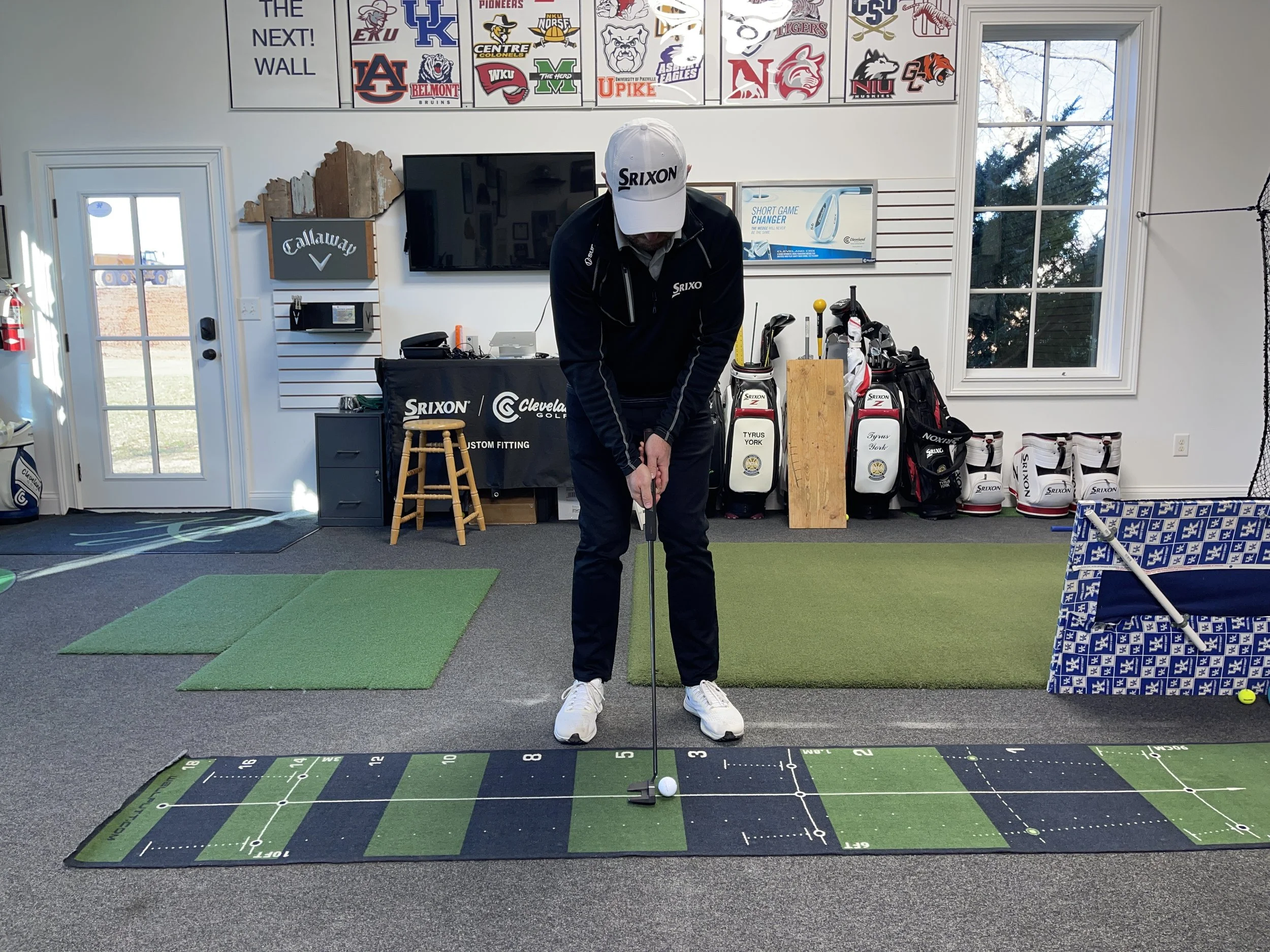Helping golfers improve their putting is a passion of mine. I firmly believe that just about anyone can be a good putter, and many can become great. But that doesn't mean that putting is easy. Yes… the physical skills required to be a great putter may be very different (and less strenuous) than having to bomb a drive 300 yards down the middle of a fairway. But putting presents its own unique challenges that seem to affect every player a little differently.
Keeping in mind that there is seemingly no “one way” to become a great putter, I wanted to share with you what I believe is the most important skill that will be required in order for you to improve putting to any degree.
SPEED CONTROL (aka distance control)
Speed control is so important because it not only helps you get closer to the hole, it will determine your read of the green.
Now that I am AimPoint Certified (click here to learn more about that) I have an even deeper understanding to how closely connected reading the green and controlling your speed is. It is so closely connected, that many AimPoint clinics will combine their green reading class with a speed control class.
The bottom line is this… you can’t effectively read greens if your speed control is off. And I’m not talking about blasting a 10 footer 5 feet past the hole. Your speed control will need to be way more precise than that if you want to make more putts.
How precise should you try to be? First of all you need to divide your putts into 2 categories:
20’ and Closer
Your goal when you are 20’ and closer is to make sure you hit a putt with enough speed that if it misses, the ball will travel past the hole at least 12-24 inches (check out the picture that came along with this post). Anything shorter or longer than that and you risk over or under reading your putt.
Outside 20’
Your goal when you are outside 20’ is to simply make sure the ball can stop within 10% of the overall length of the putt from the hole. For example; if you have a 30’ putt, the ball should stop within 1.5’ short or 1.5’ long of the hole (adding up to 3’). Just think of how many of your 3-putts will go away if you could accomplish this! Even from 60 feet… you’re just trying to get 3 feet short or 3 feel long of the hole!
To summarize, it is forgivable to leave putts outside 20’ just short of the hole. However, it is not forgivable to leave putts 20’ and in short of the hole. So the next time you are on the practice green, see how good you are at making the ball stop within the parameters above. Hint: golf tees are an excellent tool to help indicate where the ball should go if it’s not in the hole.
Knowing how long your putt is before you hit it is important for many reasons. If you keep stats (correctly) you will always need to know the length of your first putt so that you can calculate your make percentages (as well as determine your effectiveness in your approach shots/chipping and pitching). Knowing this information is important so that you can set your expectation level correctly and so you can begin prioritizing your practices to strengthen any weaknesses.
Too many times have players come in complaining about their putting, only to find out that they are statistically almost as good as the PGA Tour! After all, the make percentages on tour are very easy to find (i.e. the make percentage from 8 feet is about 50%) so in order to strengthen your mental toughness on the greens, you should probably know what putts you should be making.
Will improving your speed control directly lead to you making more putts? Maybe! Especially if your current speed control skills are lacking. Otherwise, sharpening your skill of speed control on the greens will then make the other two skills (1) reading the green and (2) hitting your line, much more useful.
Do you need help with your speed control? Come visit me at the High Performance Golf Academy and I can promise you’ll get what you need to begin improving immediately.













